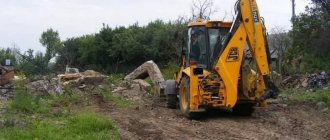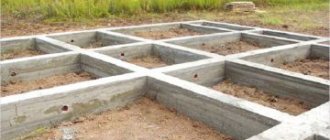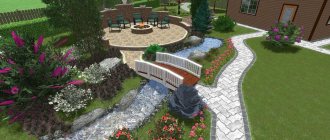Many people who own country houses or just summer cottages are seriously tormented by the question - what will happen to the house, its decoration, as well as all the installed furniture, if the house is not heated throughout the cold season? This raises another question - what is better for the house: to leave it unheated for the whole winter or to come there from time to time and heat the living quarters? This issue needs to be addressed. So, what will happen to your dacha if you leave the house without heating in winter.
Different parts of the house and furniture may react very differently to such a test. First of all, because different materials used in finishing, repair, and furniture manufacturing react differently to such tests.
What will happen to the house
Autumn passes, in our country most often accompanied by heavy rains. And finally, winter comes. The air temperature outside and in an unheated house drops sharply. As a result, its humidity also decreases sharply. But moisture does not leave the air without a trace - it is deposited on any surface - walls, furniture, floors, ceilings. If it gets cold quickly enough, the moisture turns into frost and remains in the room until the first thaw in spring. This means that objects remain wet for a fairly short period of time.
What happens if you decide to return to your country house several times during the winter and heat it? The frost melts quickly. The air in the room heats up, but the walls and all the furniture still remain cold. It takes at least a few hours for them to heat up. Consequently, when warm air (with a high moisture content) comes into contact with cold objects, drops of moisture will appear on the objects - condensation. Finally, things and the walls of the building will dry only after their temperature becomes equal to the air temperature in the room. As mentioned above, this will happen in a few hours.
Under such conditions, different materials behave differently. Glass, plastic, varnished or painted wood will easily withstand such a test - they do not absorb moisture at all. Therefore, drops of condensate will evaporate without a trace after a few hours. But ordinary wood, upholstered furniture, drywall and other breathable materials will quickly absorb moisture. As a result, furniture upholstery may begin to rot and drywall may swell.
The more such “freeze-defrost” cycles occur over the winter, the faster your things will be damaged, and the country house itself will need cosmetic repairs. This is why experienced dacha owners prefer not to visit them during the cold season. It is quite difficult to heat a frozen room to an acceptable temperature, but it is quite easy to damage furniture and decoration.
Experienced summer residents recommend putting the house on preservation in the fall - draining the water from the heating system, covering valuables or simply taking them out of the country house, and not visiting the country house until the spring thaw drives away the cold and dampness from the street and country houses.
Liquefied gas
In terms of cost per kilowatt of energy, liquefied gas ranks third.
There are different ways to deliver and store it, but the smaller the volume, the more expensive the final price. Therefore, a gas holder is needed for a permanent home, and for a small dacha, which is rarely visited in cold weather, you can get by with several 50-liter cylinders. When using a gas holder, the price of a kilowatt of heat from burning liquefied gas is 2.3-2.5 rubles, the use of cylinders raises the bar by 50 kopecks.
You can also heat yourself in different ways.
The simplest system is direct combustion of gas to produce heat without heating the intermediate coolant, pipework and radiators. For this purpose, gas convectors and infrared heaters are used. Their operating principle and design are different, but they have one thing in common - availability of equipment, compactness and operation from bottled gas. The disadvantage is the power limitation and heating of only one room. For example, infrared and catalytic gas heaters from AYGAZ have a maximum power of 6.2 kW.
With such a compact infrared heater you can heat up to 40 m2 Source vps-region.ru
On a note! You can get professional advice on autonomous gasification of a private home directly from specialists
The gas tank allows you to build a full-fledged autonomous water heating system, and the frequency of refilling depends on the volume of the container, heating area and operating mode. In terms of ease of operation and maintenance, the system ranks second after electric heating. But it requires significant initial investment for the purchase of a gas tank, its installation (usually underground) and the laying of communications (pipes for connection to the boiler and electrical cable for the tank heating system).
Another difficulty for a gas tank is choosing a location. It should be located close enough to the house and be accessible for gas refilling Source rosavtonomgaz.ru
How will wooden furniture and decoration react to wintering?
Another question of interest to dacha owners who decide to leave their country homes without heating for the winter is what consequences such wintering can have for wooden furniture and decoration. The question is very relevant, so it is worth answering it in detail.
As mentioned above, wood coated with varnish or paint is reliably protected from temperature changes and, accordingly, humidity changes. Unprotected wood, regardless of its species, absorbs moisture when air humidity is high and releases it when the ambient temperature drops. Some wood species, whose wood has a higher density, are less susceptible to this, others more so. But a similar process occurs with any wood, which is why it is called a breathable material.
When the ambient temperature drops, the wood begins to release moisture. Of course, the closer to the surface, the more intense this process is. And when drying, wood tends to shrink due to the fact that the surface has already given up moisture and, therefore, has decreased in volume, but the core has retained the same moisture content and size, and fiber rupture occurs, that is, cracks appear.
The more often changes in temperature and humidity occur, the higher the likelihood of such defects appearing on your wooden furniture, stairs, railings and floors.
Calculation of heating a room with an electric heater
So, let's try to translate everything said above into some practical plane. That is, we will try to calculate how much energy is required to replenish heat losses, and how much is required to warm up the volume of air in the room. Moreover, we will calculate heat losses not according to a simplified scheme, but according to an expanded one, taking into account polynomial factors that influence their quantity.
Next, let’s compare the total heat demand with the capability (power) of the existing electric heater - then it will be possible to draw certain conclusions.
Don't be afraid, counting won't tire you - no formulas, just a special online calculator. And all the necessary tabular values and formulas have already been entered into it.
Calculator for calculating the “accounting” of heating a room with an electric heater
Go to calculations
What will happen to the putty and wallpaper?
Owners of many houses use putty and wallpaper when renovating. Putty allows you to easily and quickly eliminate any unevenness in the walls, and wallpaper, at a relatively low financial cost, makes it possible to change the interior of the premises.
The putty has low humidity, due to which, after complete drying, it easily withstands freezing and prolonged exposure to a cold, unheated room. Putty can withstand high humidity and, especially, condensation worse. Therefore, the room must either be left cold throughout the winter or constantly maintained at a high temperature. Otherwise, by spring you will end up with a house with bloated and sometimes fallen putty. And then serious repairs are inevitable.
Method 6 - electrode boiler
Inside the electrode boiler there are electrodes, which act as a heating element. When current passes through a liquid, heat is generated. This means that in electrode boilers there is no actual heating element on which scale could form. The absence of scale will greatly facilitate operation.
Electrode boilers are highly reliable and operate much longer than tubular heaters. In addition, they are small in size, which is very convenient for a small residential building. The disadvantages include high requirements for the liquid used as a coolant. Water must undergo special treatment. Often, antifreeze generally must be exclusive - from the device developer.
The photo shows an electrode boiler Galan, Russia
Heat loss through walls
Heat loss through the walls - all owners immediately think about this. They calculate the thermal resistance of the enclosing structures, insulate them until the standard value R is reached, and then finish their work on insulating the house. Of course, heat loss through the walls of the house must be taken into account - the walls have the largest area of all enclosing structures of the house. But they are not the only way for heat to escape.
In order to limit heat loss through the walls, it is enough to insulate the house with 150 mm of highly efficient insulation for the European part of Russia or 200-250 mm of the same insulation for Siberia and the northern regions. And with that, you can leave this indicator alone and move on to others that are no less important.
Experience of European countries
If you have not yet decided how best to heat a private home, ask how they approach this problem in European countries. In many of these countries, prices for coolants are very high. Therefore, they have long been looking for methods to reduce the consumption of gas and electricity when heating rooms.
In Finland they began to build “passive” houses. This type of building allows you to consume a minimum amount of energy from external sources. A little later, such buildings began to appear in Germany. Energy-independent buildings can reduce heating costs.
An example of a European energy-independent house.
If the building is located in the south, where there are many sunny days, electricity is obtained thanks to solar panels. In northern countries, the sun cannot provide enough energy. Wind turbines are being built. The heat of the earth is also often used. After all, at a certain depth, even in the winter months there is a lot of heat.
A system of heat exchangers is installed in the ground. Ground air and heat pumps are used. During the winter months, the water is heated by the heat of the earth. It must be said that such a system requires large installation costs and pays off after several decades. If you decide to carry out such an experiment, then you should definitely insulate all the structures of the house, starting from the foundation walls and ending with the ceiling and roof of the building.
Floor heat loss
A cold floor in a house is a disaster. Heat loss from the floor, relative to the same indicator for the walls, is approximately 1.5 times more important. And the thickness of the insulation in the floor should be exactly the same amount greater than the thickness of the insulation in the walls.
Heat loss from the floor becomes significant when you have a cold base or just street air under the floor of the first floor, for example, with screw piles.
If you put 200 mm of basalt wool or polystyrene in the walls, then you will have to put 300 mm of equally effective insulation in the floor. Only in this case will it be possible to walk on the floor of the first floor barefoot in any, even the most severe, winter.
If you have a heated basement under the floor of the first floor or a well-insulated basement with a well-insulated wide blind area, then the insulation of the first floor floor can be neglected.
Moreover, such a basement or basement should be pumped with heated air from the first floor, or better yet, from the second. But the walls of the basement and its slab should be insulated as much as possible so as not to “heat” the soil. Of course, the constant ground temperature is +4C, but this is at depth. And in winter around the basement walls it’s still the same -30C as on the ground surface.
Using electricity
We have already explained how best to heat a country house when there is no gas or electricity.
If the building is connected to electricity, electricity can be used for heating. The building will be heated not by electricity, but by hot water. And electricity will heat the water. How to arrange such a heating system? First of all, you should buy a boiler in which the water will be heated. Electric boilers can be designed for different powers and have one or more circuits. If the system has one circuit, then the water is heated only to heat the house. When there is a second circuit, water can be heated for the bathroom or kitchen. Sometimes two boilers are installed in parallel. In summer one of them can be turned off. The second will heat water for domestic needs.
Types of boilers
For residential buildings, you can purchase wall-mounted and floor-mounted electric boilers. The latter have greater weight and size. Therefore, they are installed only on a horizontal surface.
Water (sometimes antifreeze) enters the boiler. Here electrical energy is converted into thermal energy. The liquid heats up and expands. The water pressure increases, the liquid moves independently through the pipes to the heating radiators. The radiators heat up and heat the building. The water cools and returns to the boiler to be heated. The system has a closed loop.
In some cases, it is possible to install a boiler with a forced circulation system. To do this, you will need an additional pump and expansion tank.
If a water heating system is not installed, but the building has electricity, other heating options can be considered. Nowadays you can buy various types of heaters that operate using electricity. Oil radiators are most often used. They consume little electricity and are safe to use.
Infrared heaters are also used indoors. But they can only warm certain areas of the room. This type of heating will save electricity. This type of heating is often used in dachas.
Infrared emitters aroused mistrust a couple of years ago. Now the situation is exactly the opposite. It turned out that this type of radiation does not pose a health threat. Moreover, these rays help cope with colds.
Heat loss through the ceiling
All the heat goes up. And there it strives to go outside, that is, to leave the room. Heat loss through the ceiling in your home is one of the largest quantities that characterizes the loss of heat to the street.
The thickness of the insulation on the ceiling should be 2 times the thickness of the insulation in the walls. If you mount 200 mm in the walls, mount 400 mm on the ceiling. In this case, you will be guaranteed maximum thermal resistance of your thermal circuit.
What are we doing? Walls 200 mm, floor 300 mm, ceiling 400 mm. Consider that you will save on any energy carrier that you use to heat your home.
When does the heating season start?
Every autumn, before the start of the heating season, residents of high-rise buildings experience discomfort because the apartments become cool.
There are suspicions that utility companies are delaying the deadlines, wanting to save money. In reality, management companies cannot turn on the heating at their own discretion - there are regulations establishing the timing and procedure for this procedure. One more point: before starting the system, it needs to be tested and repaired - leaks and air locks often occur. It takes time to fix these problems so that there are no problems in winter. The decision to turn on the heating is made by local governments, and not by the management company and TSN. The exact date has not been established; the law requires that you be guided by the weather. The heating season should begin if the average daily temperature remains below 8 degrees for 5 days. If the heat supply is delayed, residents have the right to complain to the organization servicing the house, demanding that the problem be solved and at the same time recalculated. If utility workers are inactive, you can contact the Housing Inspectorate, Rospotrebnadzor, or the district Administration.
Heat loss from windows
What is completely impossible to insulate are windows. Window heat loss is the largest quantity that describes the amount of heat leaving your home. No matter what you make your double-glazed windows - two-chamber, three-chamber or five-chamber, the heat loss of the windows will still be gigantic.
How to reduce heat loss through windows? Firstly, it is worth reducing the glass area throughout the house. Of course, with large glazing, the house looks chic, and its facade reminds you of France or California. But there is only one thing here - either stained glass windows in half the wall or good thermal resistance of your home.
Secondly, the window slopes – the places where the sashes meet the walls – should be well insulated.
And thirdly, it is worth using new products from the construction industry for additional heat conservation. For example, automatic night heat-saving shutters. Or films that reflect thermal radiation back into the house, but freely transmit the visible spectrum.
Protection from rodents during your absence
Whether your home is heated or unheated, mice and rats can enter your home. To avoid attracting undue attention from these pests, place all food supplies out of their reach. It should be taken into account that, having smelled something edible, for example, cereal, rats are able to gnaw even through a cabinet door. And having finished with food supplies, wires, wallpaper, bed linen and everything that can be chewed will be used. You should not use special poison, as it can later harm your pets or you. It’s better to clean up the mess and install an electronic repeller.
Where does the heat leave the house?
The walls are insulated, the ceiling and floor too, the shutters are installed on five-chamber double-glazed windows, the gas boiler is fired up with all its might. But the house is still cool. Where does the heat continue to go from the house?
Now is the time to look for cracks, crevices and crevices where heat is escaping from your home.
Firstly, the ventilation system. Cold air enters the house through the supply ventilation, and warm air leaves the house through the exhaust ventilation. To reduce heat loss through ventilation, you can install a recuperator - a heat exchanger that takes heat from the outgoing warm air and heats the incoming cold air.
Secondly, the entrance doors. To prevent heat loss through the doors, a cold vestibule should be installed, which will act as a buffer between the entrance doors and the street air. The vestibule should be relatively sealed and unheated.
Thirdly, it’s worth looking at your house with a thermal imager at least once in cold weather. Visiting specialists does not cost that much money. But you will have a “map of facades and ceilings” in your hands, and you will clearly know what other measures to take in order to reduce heat loss at home during the cold period.
How to heat a dacha in winter: practical recommendations
At this time of year there is no tedious weeding, planting, watering and other time-consuming work, but very interesting for people of any age. There is time to just walk around the snow-covered garden, dream and plan the beds for future planting. Clear the snow from the paths, and then warm up and drink fragrant tea infused with herbs in your home. The main thing is that there is warmth in it, which can be created, but is not always easy.
Modern technologies mastered in the production of building materials make it possible to choose any of them and even build a multi-story dacha in a short time. And immediately with a well-thought-out heating system, designed and implemented not only independently, but also with the involvement of specialists in this field.
Forums on heating, air conditioning, energy saving
The house doesn't warm up
Post by vedriganovsergei » 19 Nov 2021, 19:08
Message Code » 19 Nov 2021, 20:17
Post by oleg.dmitrievic » 19 Nov 2021, 20:24
Post by cineman » 19 Nov 2021, 21:01
Message by [email protected] » 19 Nov 2021, 21:10
Re: House doesn't warm up
Post by vedriganovsergei » 20 Nov 2021, 10:19
The foundation is made of concrete blocks. The house is made of bricks and backfill wells. The ceiling is made of concrete slabs, covered with slag and sawdust on top. So not from shit. But there is a suspicion that the wells have been awakened for 25 years
Added after 3 minutes 44 seconds: Re:
Piping around the house.
Added after 3 minutes 30 seconds: Re:
Message by [email protected] » 20 Nov 2021, 10:23
Which type of insulation is made from insulation and sawdust? What are you about? What Stone Age are you stuck in? Spend 2-3 thousand, call a person with a thermal imager, let him take pictures of your house in -10 frost. You will clearly see that your house is a sieve and you are warming the street. I have a dacha of 60 sq.m. at -10 degrees Celsius it is heated by a 3 kW boiler, at temperatures below -15 degrees Celsius I increase the boiler power to 5 kW, in the house +23. This is considered normal insulation. I built the dacha myself. And your 85 sq.m. can't heat a 24kW boiler? Yes, you are drowning the street, dear.
Added after 1 minute 4 seconds: Typo: insulation made from slag and sawdust.
Re: House doesn't warm up
Post by vedriganovsergei » 20 Nov 2021, 10:23
Message by [email protected] » 20 Nov 2021, 10:24
Re: House doesn't warm up
Post by vedriganovsergei » 20 Nov 2021, 10:33
In 1980, they built a block of houses the same as my grandmother’s, completely identical, and they also had gas installed. We were in those houses, they were warm. We suspect that something is wrong with the boiler, but we don’t know what exactly, since we are not specialists.
There are houses that are completely decrepit, leaky, and they are warm. They've already searched the whole village, knocked them off their feet.
Added after 1 minute 38 seconds: Re:
Message by [email protected] » 20 Nov 2021, 10:39
Posted by tiptop » Nov 20, 2021, 10:48 am
Message by [email protected] » 20 Nov 2021, 10:55
Post by vedriganovsergei » 20 Nov 2021, 11:01
I think we need to look from the street and compare heat loss. If you measure in an apartment, it will be clear that the partitions are warmer than the main street walls.
Added after 2 minutes 4 seconds:
Message Code » 20 Nov 2021, 11:02











